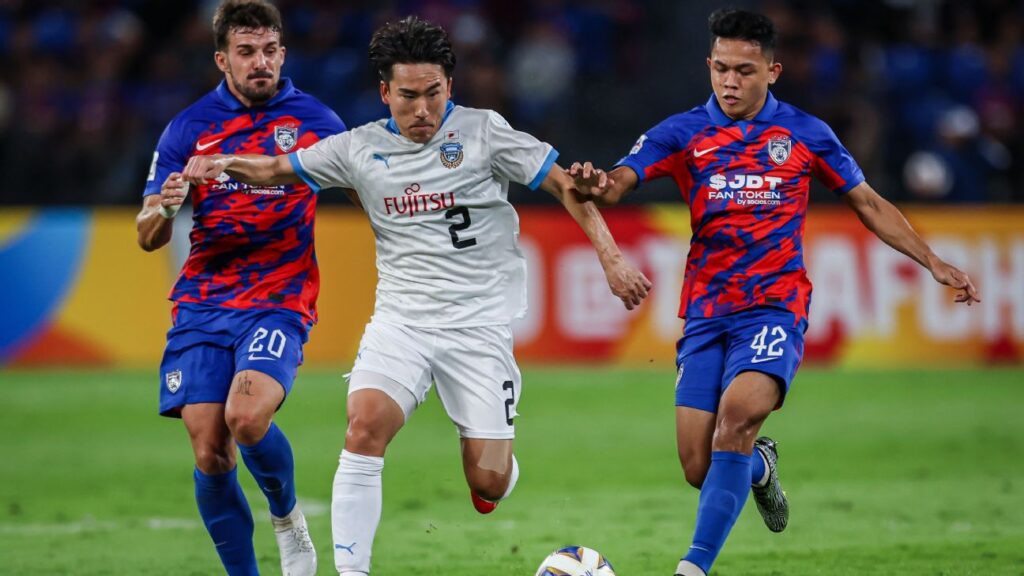With Asian club football returning this week, the new AFC Champions League Elite will see 24 teams vie to be continental champions — with the East Zone providing 12 representatives.
In a departure from the traditional group-stage format, the league stage will now see each of the 12 play eight games each and jostle for position on a single table — with the top eight then advancing to the round of 16.
Although teams from the East have dominated the tournament over a prolonged period — claiming eight of nine crowns between 2012 to 2020 — two of the past three editions have now gone to the West Zone, providing the former with extra incentive to reassert their authority this term.
The usual suspects will be expected to go far once more, but could any others spring a surprise? Here, we rank the 12 clubs in the East according to their championship potential.
The legitimate contenders: Yokohama F. Marinos, Vissel Kobe, Ulsan HD, Pohang Steelers
Runners-up last time out, Yokohama F. Marinos will be looking to make amends this season although they must be starting to wonder if they are fated to never be champions of Asia.
Despite their status as one of the continent’s powerhouses, they have only reached the final twice and were defeated on both occasions.
Still, they boast plenty of quality — headlined by their Brazilian attacking trio of Anderson Lopes, Yan Matheus and Élber — and should comfortably make it out of the league stage.
Fellow J1 League outfit Vissel Kobe also look one of the most formidable teams on paper. What they lack in star foreigners, they make up for with seasoned Japan internationals such as Yuya Osako and Yoshinori Muto.
South Korea will also provide two hot favourites in Ulsan HD and Pohang Steelers, who have five titles between them.
As ever, Ulsan are once again challenging for top honours in K League 1 but it has been a more trying campaign for Pohang, whose struggle for consistency has seen them fall out of the championship reckoning — making it intriguing to see how they will juggle multiple commitments.
The dark horses: Kawasaki Frontale, Shanghai Port, Buriram United, Johor Darul Ta’zim
For the dominance they enjoyed on the domestic front in recent times, Kawasaki Frontale have not exactly made a wave in Asia just yet.
The round of 16 was the furthest they made in the past three editions of the tournament, making it difficult to consider them among the favourites until their performances suggest otherwise.
Likewise, Shanghai Port failed to go all the way in the previous ACL era – even during the period when they boasted a star-studded team with Oscar, Hulk and Wu Lei leading the way.
It must be acknowledged that, amid the strife that has hit Chinese football over the past few years, Shanghai Port have managed to maintain some form of stability and, if anyone from the nation is capable of mounting a challenge, it will be them.
Then, there are two Southeast Asian outfits who have made a habit of punching above their weight — will this be the season where Buriram United and Johor Darul Ta’zim take it to the next level?
Buriram have been causing upsets as far back as in 2013 when they reached the quarterfinals but they will have much to make up for after a disappointing group-stage exit last term when they looked a legitimate chance to make the knockout round.
Meanwhile, JDT’s tournament debut only came in 2019 but they have taken huge strides and qualified for the round of 16 two years ago, mustering two impressive victories over Ulsan along the way.
Given the club’s ambition, going further in the ACL Elite seems a minimum requirement.
The long shots: Gwangju FC, Shanghai Shenhua, Shandong Taishan, Central Coast Mariners
While teams from South Korea and China have a rich history in Asian football, Gwangju FC, Shanghai Shenhua and Shandong Taishan will have their work cut out for a different reasons.
Gwangju did brilliantly to finish third in K League 1 last season and earn a continental debut, but it remains to be seen how well equipped they are for a different challenge – especially considering their current mid-table standing on the domestic front.
Shanghai Shenhua and Shandong are also among the Chinese Super League teams that are a shadow of their former selves. Granted, it will not be as dire as the COVID-affected years when Chinese clubs deployed reserve teams to compete – but it has been a while since any loomed as serious contenders.
The jury is also out on Central Coast Mariners, who are returning to the top tier of Asian football for the first time since 2014.
They were, however, champions of the second-tier AFC Cup (now AFC Champions League Two) last season — so perhaps they have what it takes to rise to the occasion.




